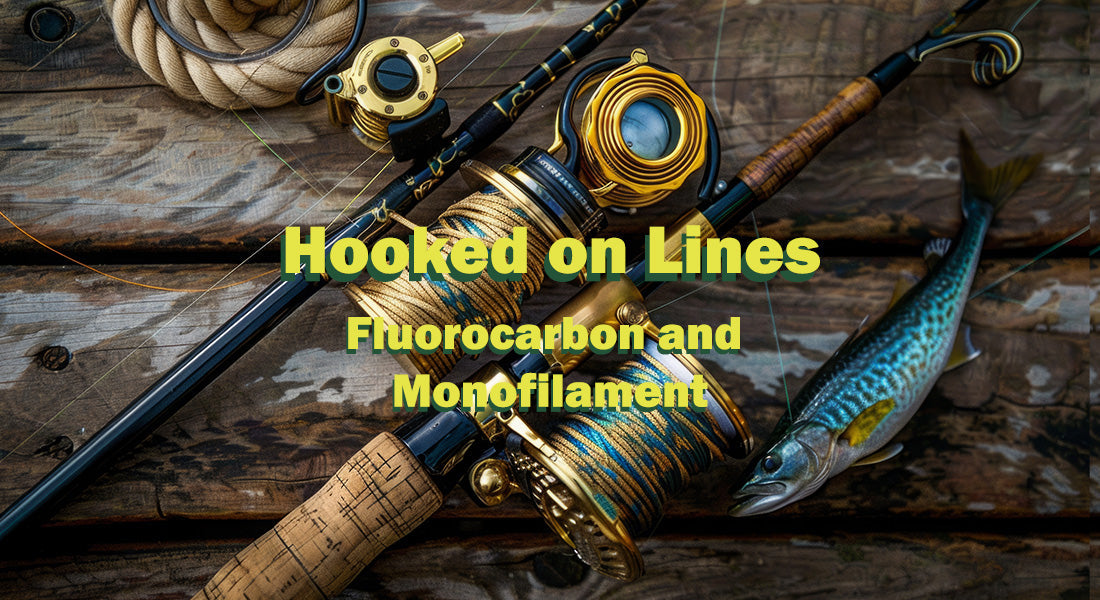Impala Angling Club is excited to introduce a new series: "Hooked on Lines!" This series is designed to provide anglers of all skill levels with the essential knowledge to choose, use, and maximise the potential of their fishing lines.
In this first part, we explore the debate between Monofilament and Fluorocarbon lines. These two popular options each have their strengths and weaknesses, and understanding their properties will help you make the right choice for your fishing needs.
Fluorocarbon: The Invisible Advantage
Fluorocarbon is a heavier line but can be harder to use. It sinks quickly and offers near invisibility underwater. This makes it a good choice for bass fishing in clear water. Here are some of its key characteristics:
Low Visibility:
Ideal for situations where the water is clear.
Sinking Properties:
Fluorocarbon’s is a heavier which allows it to break the water’s surface and sink, making it perfect for times when you want to get the lure deeper and break the surface of the water.
Specialised Use:
Primarily used as a leader line in scenarios where you want an invisible piece of leader.
Drawbacks:
- Not very abrasion-resistant or strong at the knots.
- If knots aren’t tied correctly, the line may cut itself and lead to frustration.
- Best suited for specific conditions rather than general-purpose use.
In South Africa, where waters aren’t typically crystal clear, fluorocarbon may not be a daily choice for most anglers. However, it’s best in situations where its invisibility and sinking capabilities provide an edge.
Monofilament: The All-Purpose Workhorse
Monofilament (or mono) is the more versatile and commonly used fishing line. It’s a reliable option for a wide range of fishing scenarios, from rom freshwater to saltwater. Let’s explore its key features:
High Abrasion Resistance:
- Mono can handle tough conditions, such as fishing over rocks or snags, making it durable and reliable.
- Ideal for anglers who need a tough leader line that can withstand rough environments.
Stretch and Flexibility:
Offers significant stretch which helps to prevent the line from snapping under sudden tension.
Neutral Buoyancy:
Neither sinks nor floats, allowing for versatile use in various fishing conditions.
Ease of Use:
- High knot strength.
- Works well for tying hooks, leader lines, and general-purpose fishing.
When to Use Each Line
Fluorocarbon:
- Use in clear waters where visibility is a concern.
- Ideal for bass fishing when you want your line to be invisible and sink quickly.
- Best for situations where subtlety and stealth are required.
Monofilament:
- The go-to option for general fishing purposes, including bass fishing, rock and surf, and freshwater fishing.
- Perfect for handling abrasion and rough environments.
- Offers a forgiving stretch, making it suitable for various fishing techniques.
Both fluorocarbon and monofilament have their place in an angler’s tackle box. Fluorocarbon excels in clear water scenarios, offering invisibility and quick sinking. Monofilament, on the other hand, is a versatile, durable, and user-friendly choice for everyday fishing.
By understanding the strengths and limitations of each line, you can make an informed decision based on your fishing environment and target species. Whether you’re a seasoned pro or just starting out, having the right line for the job can significantly enhance your fishing experience.
Impala Angling Club has been at the forefront of angling since the 1960s. The club and its members are family-oriented and passionate about growing the sport, particularly among the community’s youth. Impala Angling Club consists of various previous and current provincial and national anglers within the club. It’s the gateway to representing a province or a country.

